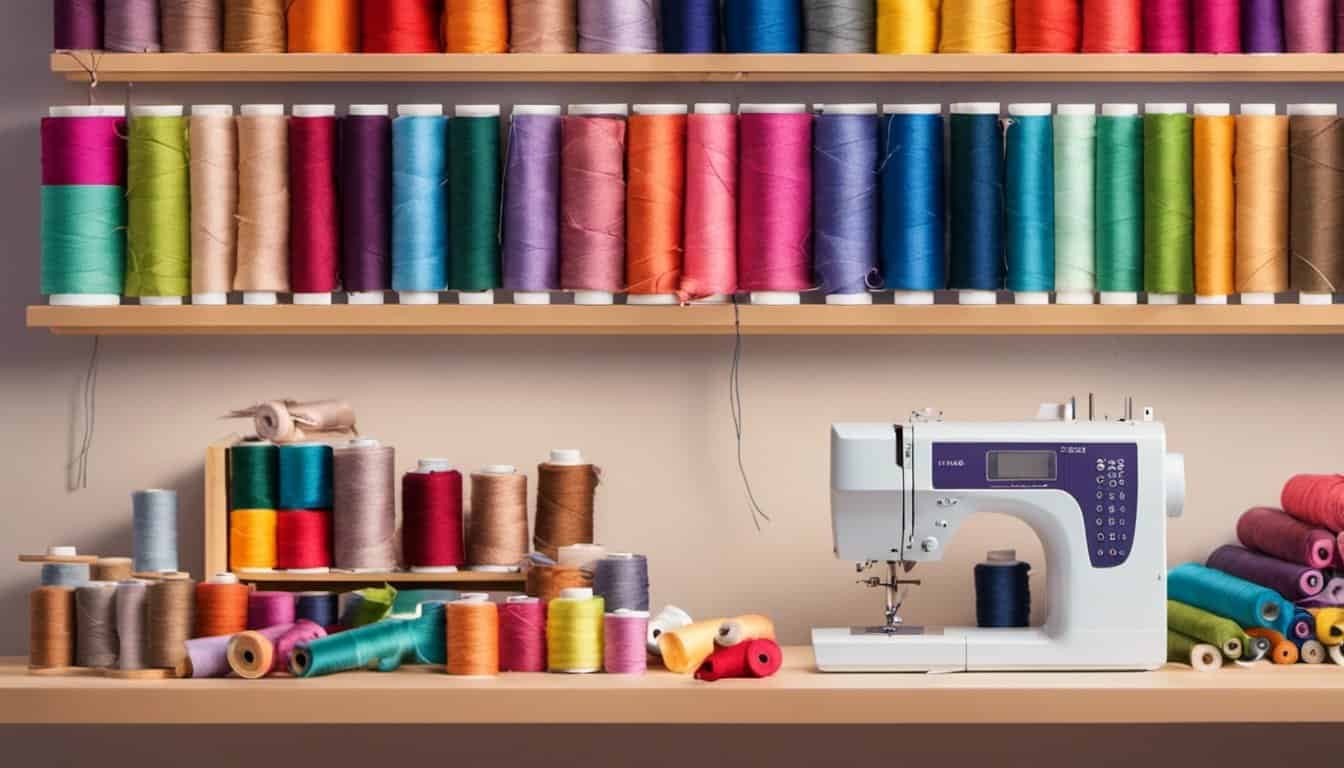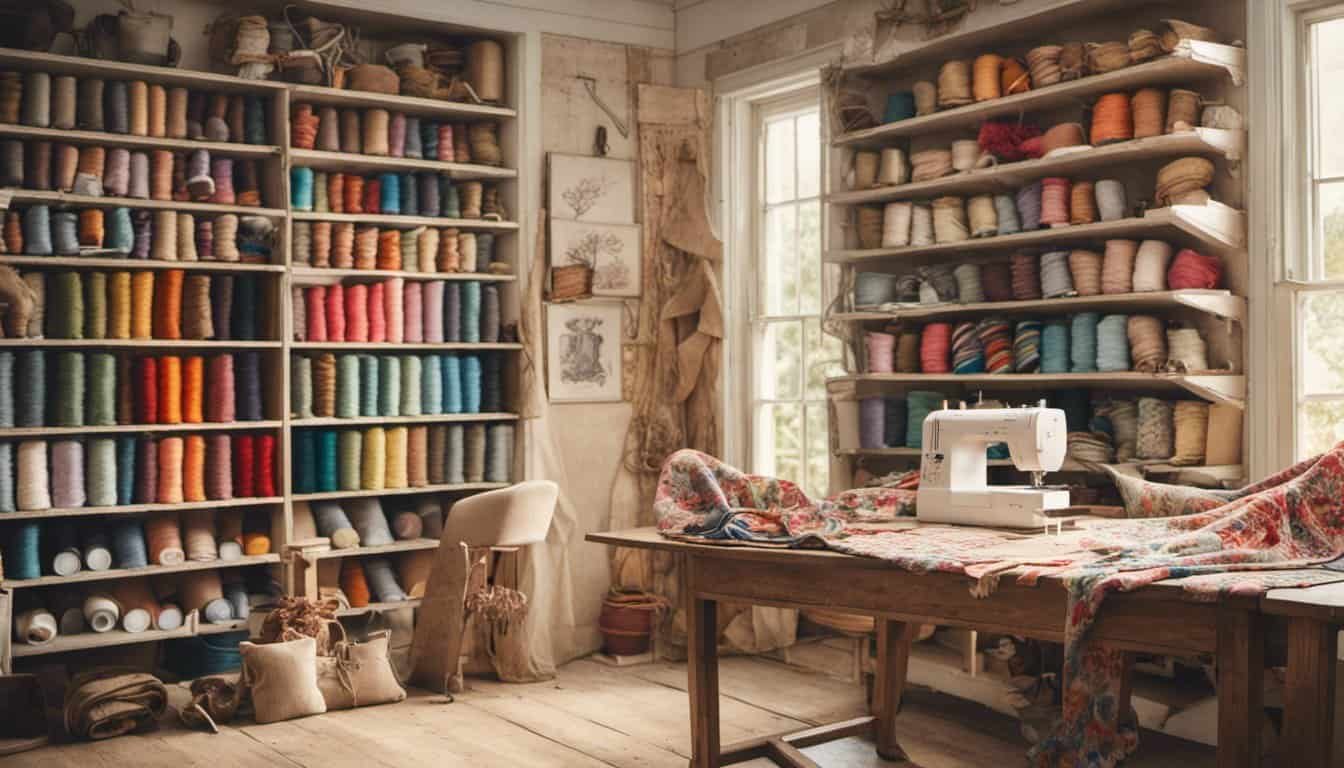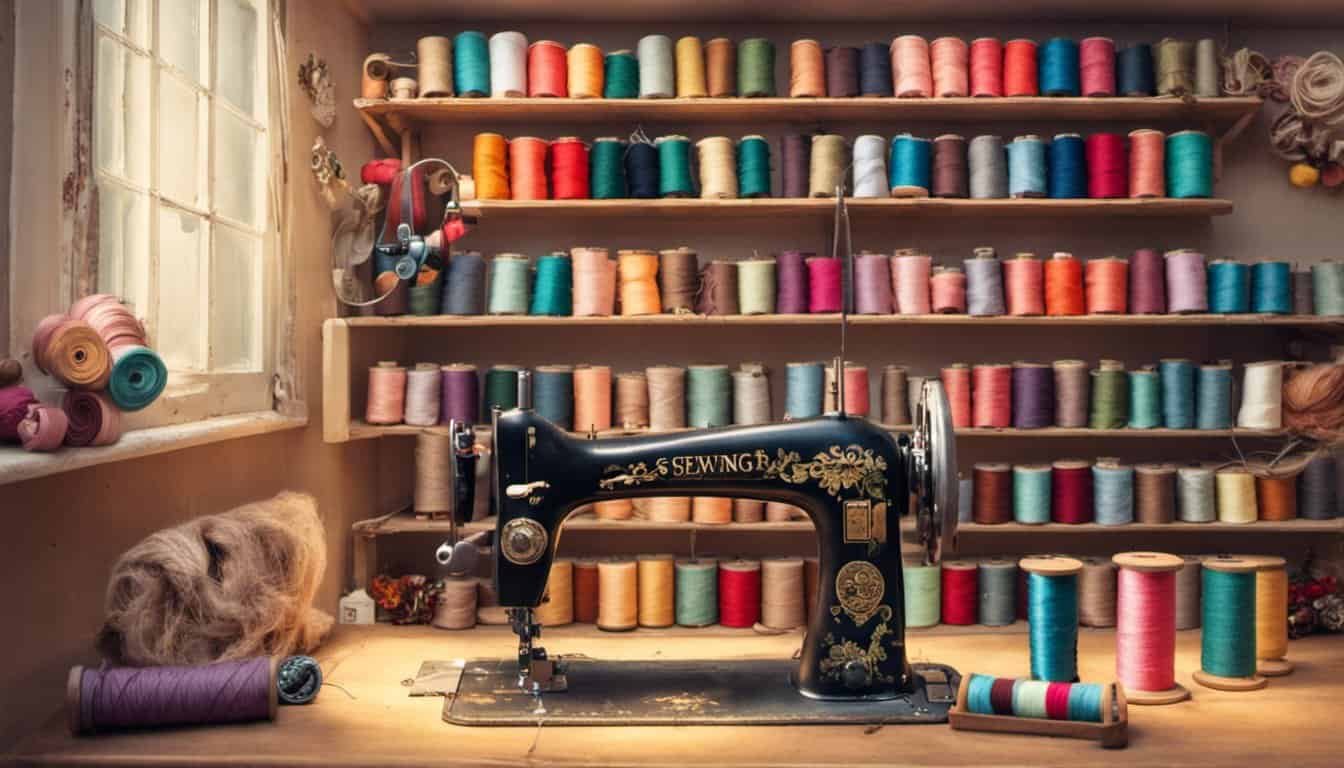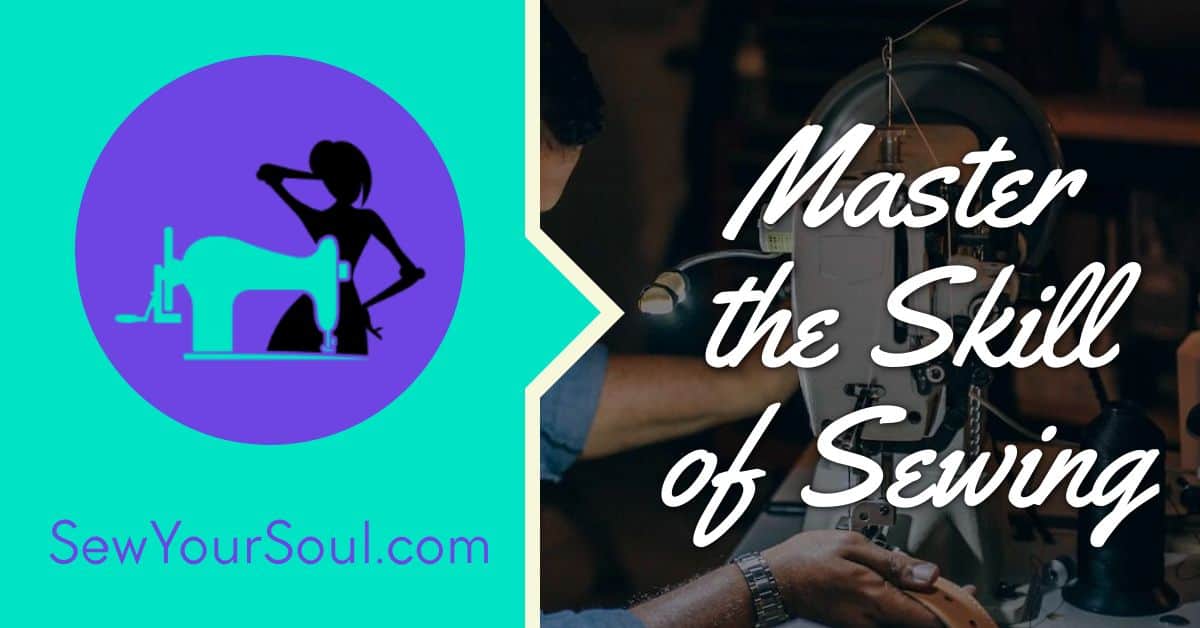Are you new to sewing and feeling overwhelmed by all the different types of sewing machine needles? Don’t worry, I’ve got you covered! Choosing the right needle for your sewing project is crucial to achieving professional-looking results. In this article, I’ll walk you through the basics of selecting the perfect sewing machine needle for your needs. From understanding needle sizes to knowing which needle to use for different fabrics, you’ll soon be able to confidently choose the right needle for any sewing project.
Do you find yourself struggling to determine which sewing machine needle is best suited for your project? You’re not alone! With so many options available, it can be confusing to know where to start. But don’t worry, I’m here to help. In this article, I’ll break down the different types of sewing machine needles and explain when and why you should use each one. Whether you’re working with delicate fabrics, heavy denim, or anything in between, I’ll guide you in making the right needle choice for optimal sewing success.
Have you ever wondered why using the correct sewing machine needle is so important? Well, wonder no more! The needle you choose can make a world of difference in the quality of your stitches and the overall outcome of your sewing project. In this article, I’ll demystify the world of sewing machine needles and provide you with all the information you need to select the perfect needle for any sewing task. From understanding needle types to knowing which needle to use for specific fabrics, you’ll gain the knowledge and confidence to tackle any sewing project with ease.
Understanding the Different Types of Sewing Machine Needles
When it comes to choosing the right sewing machine needle, understanding the different types available can make all the difference in your sewing projects. Each needle has a specific purpose and using the correct one for your fabric and project can result in professional-looking stitches and a flawless final outcome.
Universal Needles: These are the most common type of sewing machine needles and are suitable for a wide range of fabrics. Universal needles have a slight ballpoint tip, which helps them glide through the fabric without causing damage. Whether you’re working with woven or knit fabrics, a universal needle is a great all-purpose choice.
Ballpoint Needles: If you frequently work with knit fabrics, such as jersey or stretchy materials, a ballpoint needle is a must-have. The rounded tip of the needle prevents it from piercing and snagging the fabric fibers, allowing for smooth and even stitches.
Sharp Needles: Also known as microtex or quilting needles, sharp needles are designed for sewing through dense fabrics like denim and canvas. With a sharp and fine point, these needles can easily penetrate multiple layers of fabric, creating precise and neat stitches.
Embroidery Needles: As the name suggests, embroidery needles are specifically designed for machine embroidery projects. They have an enlarged eye, allowing the passage of thicker threads and specialty embroidery threads. These needles also have a special coating to reduce friction and prevent thread breakage during embroidery.
Stretch Needles: When sewing on highly elastic fabrics like Lycra or Spandex, a stretch needle is your best bet. These needles have a deep scarf, which helps prevent skipped stitches and ensures proper stitch formation on stretch fabrics.
Leather Needles: If you’re venturing into leatherwork or working with faux leather, a leather needle is essential. These needles have a chisel-like tip that cuts through the material rather than piercing it, resulting in clean and precise stitches.
Remember, using the correct sewing machine needle is crucial for achieving professional-looking results. Before starting your next sewing project, take the time to evaluate your fabric and choose the needle that best suits your needs. By doing so, you’ll ensure a smooth sewing experience and impressive results every time.
Needle Size and Fabric Weight Compatibility
When it comes to selecting the right needle for your sewing project, considering the size of the needle and the weight of the fabric is crucial. Using the wrong combination can lead to poor stitching, broken needles, or even damage to your fabric. So, let’s dive into understanding needle sizes and how they align with fabric weights!
Needle Sizes
Needle sizes are represented by numbers. The higher the number, the larger the needle. Most commonly, needle sizes range from 9 to 18. Smaller sizes like 9 or 11 are perfect for delicate and lightweight fabrics, while larger sizes like 16 or 18 are best suited for heavy-duty fabrics or thicker layers.
Fabric Weight Compatibility
Here’s a handy guide to help you match your needle size with the fabric weight:

- Lightweight Fabrics: For delicate and lightweight fabrics such as chiffon, organza, or silk, opt for smaller needle sizes like 9 or 11. These finer needles prevent any visible holes or excessive fabric shifting.
- Medium-weight Fabrics: Fabrics like cotton, linen, or satin fall into this category. To achieve clean and even stitches, use a needle size between 12 and 14. These sizes can handle the average thickness of medium-weight fabrics with ease.
- Heavyweight Fabrics: When working with heavyweight or thick materials like denim, canvas, or upholstery fabric, it’s important to choose a larger needle size. Opting for sizes 16 or 18 will ensure that your needle can easily pierce through thick layers and deliver strong and durable stitches.
Remember, the goal is to find a needle size that allows the thread to move freely through the fabric without causing any damage or compromising the integrity of the stitches.
Considering the Fabric Type
When it comes to sewing projects, choosing the right sewing machine needle is crucial for achieving professional-looking results. One important aspect to consider when selecting a needle is the type of fabric you’ll be working with. Each fabric has unique characteristics that require a specific type of needle to ensure seamless stitching. Here’s a guide to help you match your fabric type with the appropriate needle:
1. Lightweight Fabrics
If you’re working with delicate fabrics like silk, chiffon, or organza, it’s best to use a fine needle. A size 9 or 11 needle should do the trick. These needles have a smaller eye and a sharp point, allowing them to glide through the fabric without causing any damage.
2. Medium-Weight Fabrics
For fabrics like cotton, linen, or flannel, a universal needle is a great choice. These needles have a slightly rounded point that works well with a variety of fabrics. Sizes 12 or 14 are often suitable for medium-weight fabrics, but make sure to adjust the needle size based on the thickness of the fabric.
3. Heavyweight Fabrics
When working with heavy fabrics such as denim, canvas, or upholstery materials, it’s important to use a needle that can handle the extra weight. A size 16 or 18 needle, also known as a jeans or topstitching needle, is designed specifically for this purpose. These needles have a sharp, reinforced point that can easily penetrate and stitch through thick fabrics.
« Discover the Ultimate Monogramming Machine That Will Transform Your Sewing Projects Forever
Discover the Shocking Truth About Stick and Poke Tattoos: Are Sewing Needles the Secret to Perfect DIY Ink? »
4. Knit Fabrics
Knit fabrics, like jersey or stretch fabrics, require special needles to prevent skipped stitches or fabric damage. Ballpoint needles are ideal for these types of fabrics, as they have a rounded tip that pushes between the fabric’s fibers rather than piercing them. Sizes 11 or 14 are commonly used for knit fabrics.
5. Specialty Fabrics
Certain fabrics, such as leather, faux fur, or embroidery and metallic threads, require specialized needles for optimal results. Leather needles have a chisel point that easily pierces through leather or suede without tearing the fabric. Embroidery needles have a larger eye to accommodate thicker thread, while metallic needles have a larger groove to prevent thread shredding.
Remember, selecting the right needle for your fabric type is an essential step in ensuring a successful sewing experience. By matching the needle to the fabric, you’ll achieve seamless stitches and avoid any potential fabric damage. So, take a moment to
Needle Types for Specialized Techniques
When it comes to certain sewing projects or techniques, you may need a specialized needle to achieve the best results. Here are some needle types that you should consider for specific applications:
1. Quilting Needles
If you’re venturing into the world of quilting, it’s important to use the right needle. Quilting needles have a sharp point and a slightly tapered shank, allowing them to easily glide through multiple fabric layers and batting without damaging the delicate fibers. Thicker needles, like size 14 or 16, are ideal for quilting projects.

2. Denim Needles
Denim is a sturdy fabric that requires a needle capable of piercing multiple layers without breaking or bending. Denim needles, also known as jeans needles, are designed specifically for this purpose. With their sharp points and robust construction, they can handle heavy-duty fabrics such as denim, canvas, or upholstery materials with ease.
3. Twin Needles
Twin needles are used for creating decorative stitches, pintucks, and parallel rows of stitching. They have two needles attached to a single shaft, allowing you to sew two parallel lines of stitches at once. Twin needles come in various sizes, so make sure to choose the right one for your desired stitch width.
4. Wing Needles
Wing needles are primarily used for heirloom sewing and decorative stitching. They have flared side wings that create large holes in the fabric, giving a delicate, lacy effect. These needles are perfect for embellishing delicate fabrics, such as batiste or Swiss voile, with delicate designs or hemstitching.
5. Metallic Needles
If you’re working with metallic threads for embroidery or decorative stitching, use metallic needles. These needles have a larger eye and a special coating that reduces friction and prevents thread breakage. They are specifically designed to handle the unique challenges of working with metallic threads, ensuring smooth stitching and preventing thread damage.
Remember, selecting the right needle for specialized techniques can make a significant difference in the outcome of your sewing projects. By using the appropriate needle type, you can ensure smooth stitches, prevent fabric damage, and achieve professional-looking results.

Troubleshooting with Needle Issues
Sometimes, even when you choose the right needle for your sewing project, you may encounter issues along the way. Needle-related problems can affect the quality of your stitches and the overall outcome of your project. But don’t worry, I’m here to help you troubleshoot some common needle issues so you can get back to sewing with ease!
Skipped Stitches
If you’re experiencing skipped stitches, where the needle seems to miss stitching in certain areas, it could be due to a few factors:
- Dull or bent needle: Check your needle for any signs of dullness or bending. Replace it with a new, sharp needle to ensure smooth and accurate stitches.
- Incorrect needle size: Using the wrong needle size for your fabric can cause skipped stitches. Make sure you’re using the appropriate needle size based on the fabric weight.
- Improper threading: Double-check that your machine is threaded correctly. Incorrect threading can lead to skipped stitches or uneven tension.
Breaking Needles
While it’s rare for needles to break, it can happen. Here are a few possible reasons and solutions:
- Wrong needle type: Using the wrong needle type for your fabric can cause it to break. Make sure you’re using the appropriate needle for the fabric you’re working with.
- Incorrect needle insertion: Ensure that you’re inserting the needle correctly into your sewing machine. If it’s not aligned properly, it can lead to needle breakage.
- Fabric thickness: If you’re sewing through thick or multiple layers of fabric, you might need a stronger needle, such as a denim needle, to handle the additional strain.
Uneven Stitches
Uneven stitches can be frustrating, but there are a few things you can check to address the issue:
- Tension settings: Improper tension settings can result in uneven stitches. Experiment with adjusting the upper thread tension to achieve balanced stitches.
- Needle damage: Inspect your needle for any damage, such as nicks or burrs. A damaged needle can affect the appearance of your stitches.
- Thread quality: Poor-quality thread can cause uneven stitches. Opt for high-quality threads that glide smoothly through the needle and fabric.
Conclusion
Now that you have read this comprehensive guide on selecting the right sewing machine needle, you are equipped with the knowledge and confidence to tackle any sewing project with ease. By understanding the different types of needles and knowing when and why to use each one, you can achieve professional-looking results.

Remember, the correct needle can make a significant impact on the quality of your stitches and the overall outcome of your sewing projects. Whether you are working with lightweight, medium-weight, or heavyweight fabrics, there is a needle size and type that is perfect for your needs.
Don’t forget to evaluate your fabric and choose the appropriate needle for a smooth sewing experience and impressive results. If you encounter any issues such as skipped stitches or breaking needles, refer back to the troubleshooting tips provided in this article.
With the right needle in hand, you’ll be able to create beautiful garments and crafts that showcase your skills and creativity. So go ahead, grab your sewing machine and start stitching with confidence!













